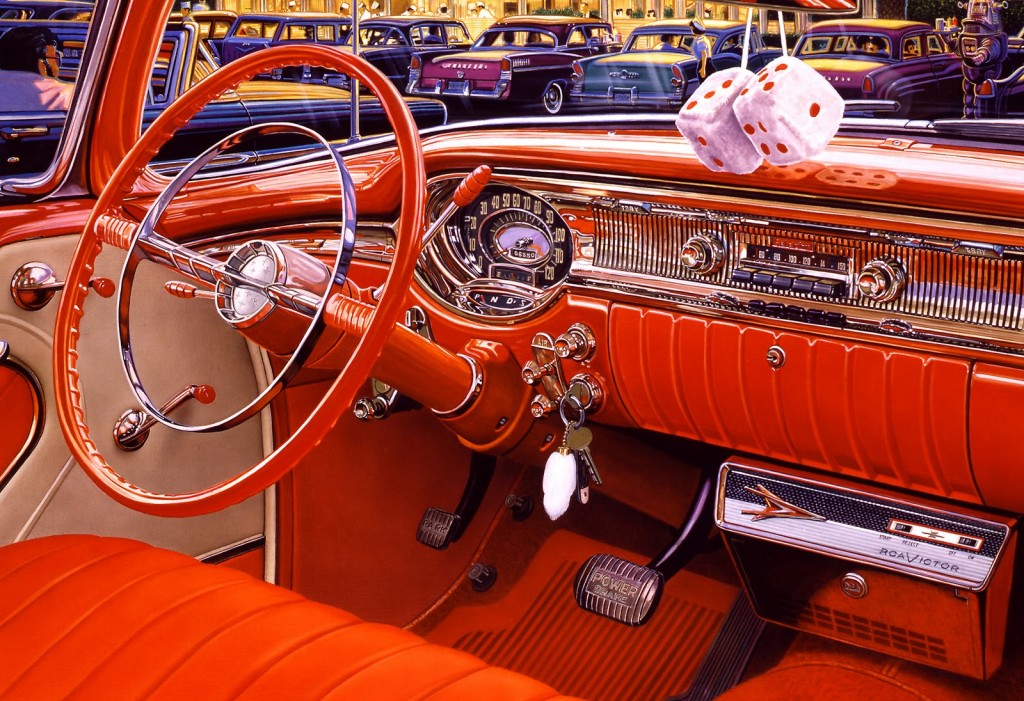
“What is most difficult here is to express this indefinitness correctly and without distortion”.
Ludwig Wittgenstein
I wanted to write a bit about writing. Maybe just about writing for theatre, right now.
I have a student (one of my very best students, in fact) who began her new play with a scene set in a double wide trailer. The set is described briefly. This is a recognizable ‘white trash’ setting.
It’s an interesting scene, and the dialogue is quite good — and there is an almost surreal dimension to it. But….there is a problem that exists right at the start with the description of this set. If you build a set that is recognizable as what it is, that the audience knows without being told, ‘we are in a trailer park, with no doubt lower working class or underclass characters’.
The problem is, that set represents a trailer. What if there were no set? What if the characters had to discuss the trailer we, the audience, can’t see? What would happen to the scene, to the play? First off, in a sense, you distance the play from a ‘theatre of representation’ — and introduce something else, which is a necessity for history.
Mobile homes were a product of the 1950s, of a vision of mobility that came with the post war belief in progress and expansion. The original mobile homes (a term not used before the mid 50s) were 8 feet wide, and the later, 10 feet (the *ten wide*). They were made of pre-painted aluminum siding (unlike the airstream trailers of the late 1940s, which were painted after assembly). They were put together and moved to ‘trailer parks’, and often nobody had any intention of ever moving them. This was default low cost housing for the poor. Financing and regulation of trailer parks, or trailer courts is a complex story of local jurisdictions fearing the influx of trailer trash residents, and also of HUD restrictions and insurance issues. A small part of American housing and class relations is written into the story of mobile homes.
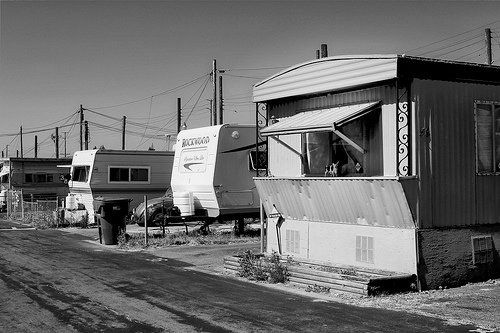
So what happens to the play when representation is stopped? The idea of the play, not its message, emerges through a formal presentation of the setting. Not a representational one. The formal one also means the enclosure of “realistic” or “naturalistic” dialogue is distanced. The formal doesn’t represent, it questions. Plays, good ones, are always self interrogations. The characters (the play) must engage with it’s own story in a sense. It’s not realistic (sic) to have someone launch into a discussion of the history of ‘ten wides’, or trailer court regulations and financing for the poor. Or of devaluation of property and taxing. But this is exactly the point at which the play opens up its space…. and the point where the offstage begins. One could imagine actors miming the trailer, making clear the location of the scene. I can also imagine a simple note in the program. But the play’s idea of itself is lodged in the distance it creates by way of presenting, formally, the setting –formally in the sense Melville did with whale cetology in Moby Dick. Again, a distance from the naturalistic, or realistic. The play begins when the mystery of this opening, this space, is established.
Adorno pointed out that 19th century artworks strove to efface the traces of their production. This is in line with the ideology of the west at the time; and with notions of continuity, progression, transition and development. There is always, in theatre (and a comparison with film is another topic worth discussing) a tension between semblance, and an ideological belief in the “real”. There is also a tension between immananence and transcendence. The completion of any artwork, if it is to emancipate itself from kitsch, must distance nature. For when so doing, something else returns or emerges that is related to nature — but an unformed nature, or non mediated nature. There is always something authoritarian about completion ….as there is about the elements of plot and structure. The greatest writing in theatre is the work that consistently refuses these devices (entrances and exists, sets, and reconciliation of story). When a character ‘enters’ a play, the play has given itself over to this enclosing (there are obviously some exceptions, but not many).
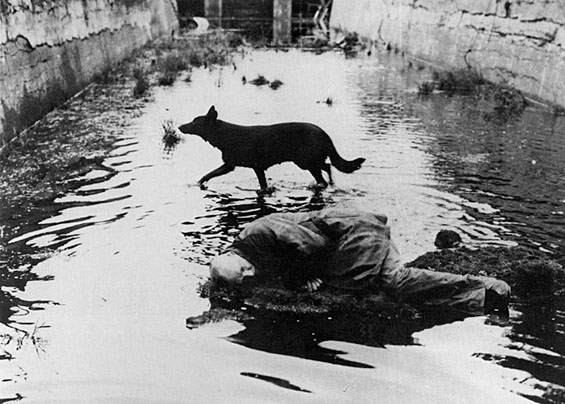
Stalker, dr. Tarkovsky, 1979
I have recently been struck, more than ever before, by the grotesque nature of all institutions. All of them. I suspect the appeal of the history channel’s new Vikings series is that the world of 800 a.d. is free of the soul deadening ennui of schools, bureaucracies, and government.
To watch high school kids leave school after a day of totalitarian training, is among the saddest visions available to modern man. The apathy and absence of life in the faces of young people is a horror I suspect is repressed as a matter of course almost before all other experience. It has a corralary in artworks — in which (in this case the play) appearance is ideologically tuned to suggest that the message proves the play is more than it is. The semblance of the artwork is proved by a kitsch interpretation, and a message, or theme, that is readily accessible to sound bite reviews. The play aligns itself in the ideological harmonics of the ruling classes, itself hidden, and hides further in the plots of corporate entertainment and officially sanctioned theatre. The theme announced ahead of time by the set, by characters that are cliches, and by a pandering to the belief system of the state…via the normalized sense of equilibrium in the outside world, is the standard. This is the backdrop for 99% of what is seen on TV and made in Hollywood. Maybe 99.9%.
This is a world established by the enclosing of narrative, the co-option of language, and the established themes of the mediated state. It is there to ‘give’ a world to the audience. It is given as simplified, but appealing, and with signifiers for complexity, while actually remaining ahistorical and simple.
Its interesting to look at the way in which media has depicted Chavez’ death, the sadistic prosecution of Bradley Manning, and now the selection of a new Pope. These are revisionist narratives created to reinforce ideology, but in particular to reinforce a sense of what is “realistic”.
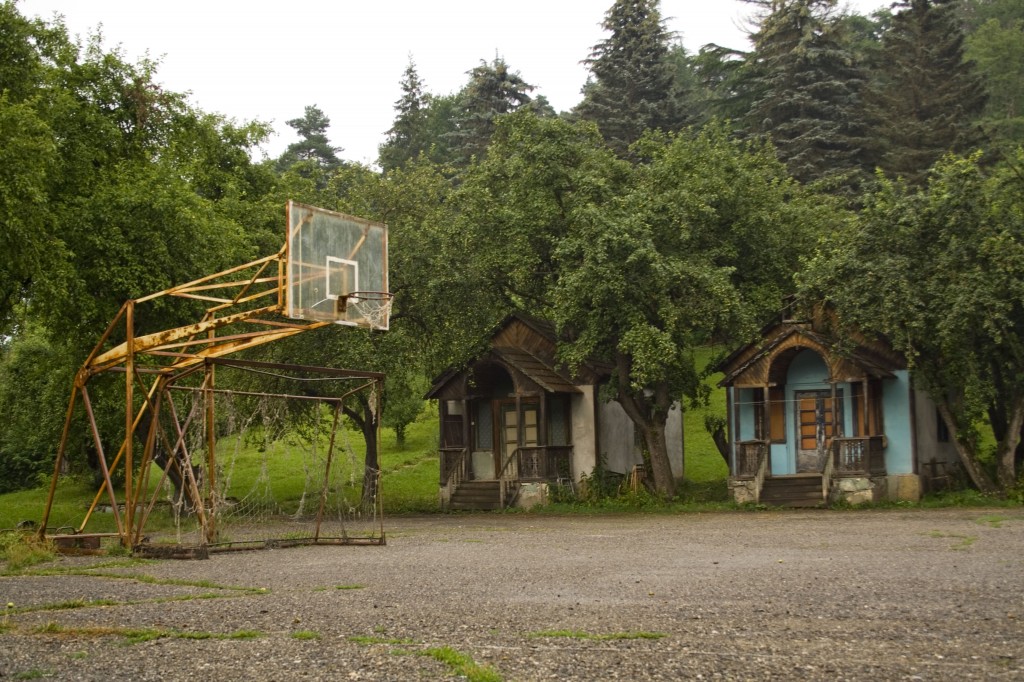
Take the Pope….(please). Here we have the ‘retirement’ of Pope Ratzinger. The Bavarian clerk who served as a sort of modern day grand inquisitor for Pope John Paul, his consigliere really, the banal colorless bureaucrat who aided the transition of the church from what was left of the Second Vatican Council, and return it to the fascist criminal system it is always was… the transition taking place under the ideological umbrella of Opus Dei (Josemaria Escriva, close pal of Franco, and staunch royalist and fascist). That Karol Wojtyla so embraced the fascist underpinnings in Europe is no surprise….Ustase war criminals, Nazis, Franco loyalists….all welcome at the Holy See. Cardinal Stepanic, loyal pal of the Ustashe, of Ante Pavelic, was made a saint by Pope John Paul. Not, oh, Oscar Romero, no, but a loyal friend of the Nazis and Croat fascists….(http://www.holocaustrevealed.org/_domain/holocaustrevealed.org/Yugoslavia/Yugoslavia-Croatia.htm).In the world of the catholic church, Ratzinger was the guy who delivered the bad news. Stamp out liberation theology.—- call Rat. The reptilian little man, following John Paul’s long overdue death, sort of just appointed himself Pope. But now, as Mathew Fox noted, the Vatican is under siege….good time to step down. Who is appointed but a South American fascist, friend of Pinochet and the military junta that ‘disappeared’ so many thousands. Now, none of this is part of the narrative. Oh, you might hear an occasional side bar story about *critics* of the new Pope… but you wont see them fitted into the narrative. The narrative is the same one that runs alongside John Paul as liberator of eastern Europe, Ratzinger as loyal servant to the great man, and now Pope Pinochet, er….Francis. One of the things that still astonishes me about Papal coverage is how little commented upon is the extreme and visible wealth of the Vatican. The heinous gold lame robes, the floppy gold and jeweled rings, the stupid fucking hats, the alter boys…carrying plates of gold and silver.
http://www.guardian.co.uk/world/2013/jan/21/vatican-secret-property-empire-mussolini
The wealth and land holdings are so vast nobody really has any idea where they end, not even the Church. But if there is a fouler more morally compromised institution in the world, I don’t know what it is. CIA maybe, but they don’t own that level of property.

I digress….
The narratives are all built within this simplified world —kitsch world. And the language and representation of this world is carefully calibrated. It is calibrated to the trivial. So to bring this back to writing: the first act in writing (lets say a play) is to understand this backdrop and what might be the strategy for stepping outside it. This is “realism” — a recognizable set of gestures, facial expressions, phrases, texts even, and images. Kitsch World is bland and it is trivial and it is infantile emotionally.
I mentioned as an example, the horrors of the Catholic Church, just its 20th century litany of crimes, for we could go back to the Inquisition. Good writing, the simple version, is writing that in its sense of inwardness, its divorce from the mediated landscape of mass media, writes a language as concise and specific as kitsch language is blurry and imprecise. It is to write nothing before writing from within the dry abstract realm of mummified human relations in the Spectacle. The realistic is “logical”, is “common sense” and is polite. It is friendly, and it is also snarky — smug — it is the smug self satisfied handshake of the local DA before a trial. So even if the first lines, the first character, are discordant and strange, are blank or screaming in silence …. this is still, sometimes, the only way out.

The truth of an artwork is in its form. The intention notwithstanding.
“Confronted with an antagonistic reality, the aesthetic unity that is established in opposition to it immanently becomes a semblance.”
Adorno
The various levels of concealment in artworks still end up, regardless of resistance or compliance to authority, creating the semblances and truths of resistance. This is why the first step in writing plays is subtraction. The less that is mediated by the logic of social domination, the more openings for radical vision can take place. To return to the trailer park; the depiction of a “real” trailer park, on stage, necessitates a capitulation to pre-given reductive assumptions about life in mobile homes. Once the play itself must investigate the life in those spaces, by engaging with history, with another language in fact, another vocabulary than that of “theatre writing”, a liberation of sorts takes place. The meaning of a trailer park becomes possible, in the same way the meaning of a Gothic Cathedral can occur when walking into one. “We” know the life in trailer courts — there are millions of bad TV shows and movies making fun of these places. To write without the ambition to revelation, however, is to write reactionary work. That reveleation, however, must be engaged with carefully, and with the knowledge that a destruction of its unity is always demanded.
This also touches on how genre intersects with this. The writers of underclass America, the good ones, in almost ritualized prose, examine these underclass backdrops as places of importance, not targets for reform. The trailer park is as significant as The House of Commons, or the U.S. Senate.
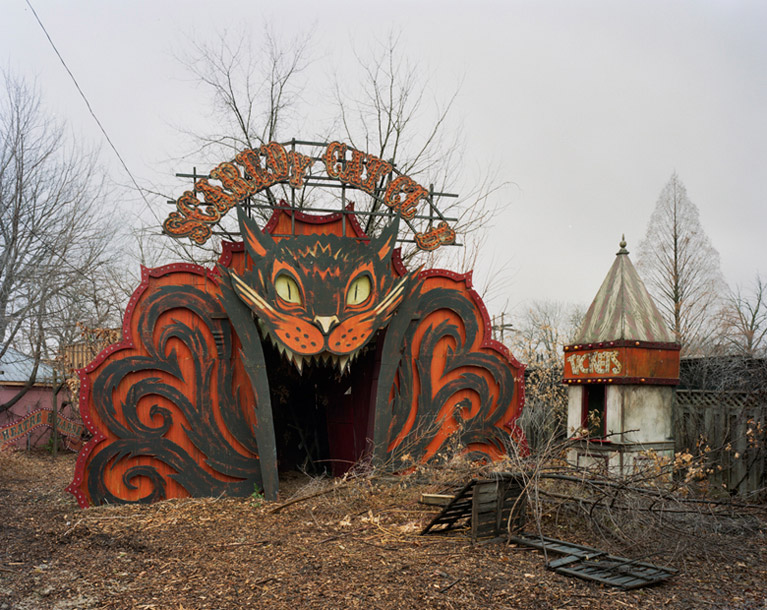
This is where some of the comments from the previous posting come into play. The act of subtraction can itself (as the act of conscious destruction) all too easily become pre-fabricated. They often submit to the seductions of *authenticity* and *primordialism* (etc). This is why the idea of (in its several meanings) the ‘real’ is so insidious. There are literally hundred of wrong turns in just the ‘approach’ to writing and directing. There is often a resorting to “confession” or to “honesty” — the raw or the undecorated… as a revolt against homogenization. None of which is necessarily bad, except that it is an enclosed mediated form for expression. The confessional is perhaps the most abused trope available to, particularly, the petit bourgeoise. Writing about your blow jobs is not liberating. It has never been, and it can’t be. The same problem exists in performance. A kiss on stage is a form of spiritual death almost. Why? I have often considered why, and for a long time I didn’t let actors even touch each other on stage. Any touch is very dangerous. But this edges into the topic of completion again. Once completed, the artwork can only pretend to “becoming”….the re-creation has an ersatz dimension to it. I suspect this is partly why the fragment and unfinished is so seductive. A touch completes something, resolves something on an energetic level. There is a confusion about radical eroticism involved in all this, and it is best illustrated by nudity on stage, which can be both reactionary, and radical….depending.
Confessing to blow jobs is not telling the truth. Even when it is.
Perhaps because the hidden remains hidden, and a lie is being told about real.

The creation of serial work, in a sense, mitigates a sense of completion, for there is another version of something much the same waiting to be seen. The same but different. It is also an echo of Fordist production, of the industrial material world, now overrun by a post industrial reality…but whose traces remain in the collective memory.The artwork built from below, without the idea of hiding of its production, intellectually or otherwise, is the starting place for resistance —and yet, if such expression is fetishized in some way, if the meaning is pre-decided, then the reactionary status-quo is reinforced.
Adorno said of Kafka, that it was natural history leading to nothing.
“Art imitation exclusively as the imitation of an objective expression, remote from psychology, of which the sensorium was perhaps once conscious in the world and now subsists only in artworks.”
It is important to see how the fascist personality intersects in this discussion with both immanance and semblance, and with form. The inhibited repressed authoritarian mind rejects ahead of time the idea of self reflection — it is weak and it is feminine. They pride themselves on their hatred of any aesthetic. It’s not bad taste, it’s no taste. They are defensive, and insist on the functional and their own tightly wound narcissism. The liberal version of fascist, which one sees today in ever greater numbers, is the enabler of the current protracted love affair with balance and fairness seen in corporate entertainment, as well as moderation (repression, self denial); and both reject the ambiguous, although from different directions.
The formalized manners of the ancien regime are something quite distinct from the relaxed smiles and presentation of comfort one sees in the western bourgoisie today. Its difficult to know which expresses more inauthenticity. The earlier more rigid form allowed the same reaction formations that led to revolt, while the friendly face of the well adjusted simply hides an inner sadism… but hides it efficiently.
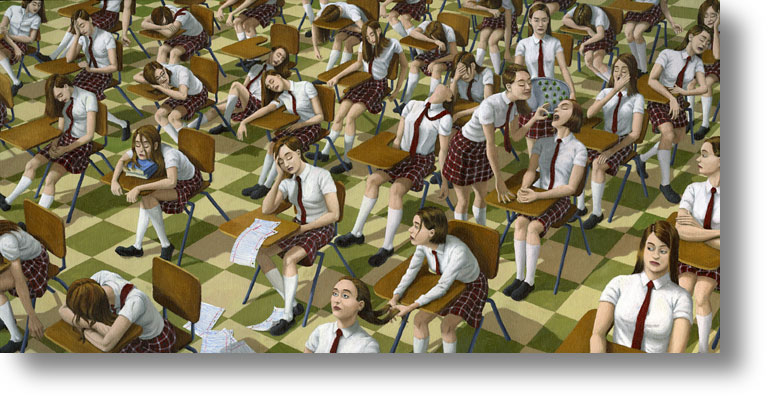
There is something important, too, in the fascist personality as it tacitly stands against expression. The hatred of the uncertain, of disunity, reflects a sexual repression as well — and here there is a dialectic that is crucially important; the leftist assault against abstract expressionism (and the kitsch history that gave the origin of Ab-X expression to the CIA…which in fact was involved in its own kitsch perceptions of the communist threat and recoiled against the realism of Rivera and the muralists — but in fact the dislike of abstraction coincided nicely with a puritanism against expression)later morphed into a reactionary condemnation of art in general. Expression was soft and too moist and fecund. The hardness of clear figures and setting was far easier to align with a vulgar factory trotsky-ism… or a grey suited anonymity of office life, the clerks of industry, of Imperialism. The radical vision persisted, however, in its resistance to a misogyny and misanthropy hidden within these formations, by the likes of R.D. Laing, and Reich earlier, but also Norman O. Brown and Marcuse, and in theatre with the work of Genet and Pinter and Boal and Growtowski. The left mistook a marketed masculinist posture in American painters as regressive, instead of the deeper regressions of the often simplistic muralists, who led then, in their black outlined figures, their moral bombast, even if righteous, to Warhol and Lichtenstein…Johns and Stella, all of whom were both compromised and not compromised by the growing art market… but clearly the rise of the *ironic* in the latter suggests the last sincere painting belonged to Rothko and Pollock.
I am being reductive here, for its a good deal more complex than this.
Adorno again:
“With the growing powerlessness of the autonomous subject, inwardness consequently became completely ideological, the mirage of an inner kingdom where the silent majority are indemnified for what is denied them socially; inwardness thus becomes increasingly shadowy and empty, indeed content-less in itself.”
The colonized subjectivity of crap performance art or confessional hobby poems, or the leisure time potters and painters — this repressed obedience to social control, to regulated uses of time and space, is reflected in the adoration of (and simultaneous contempt for) the retarded or slow learner. Love Forrest Gump or hate the mentally ill on skid row — its all the same cloth. We are the mentally restricted.

The dominated self is one whose mimetic re-telling of narrative is pinched off at the root. The narrowness of sensual recognition results in the love of ever more infantile artworks. Couple this to the marketing of subjective authority — a uniform subject who prides his or herself on an inherent philistinism, and where the crudeness of “I know what I like” or “I dont care about what it means” is given validity by Madison Avenue for all the better to sell these subjects what they don’t really need. The conformity of *I dont care what it means* is sold as individuality. Being ignorant is sold as individualistic, strong, independent.
The new philistine is the “I can feel it in my bones” as an aesthetic judgement.
Infantilism, resentment at one’s own infantalism, and a marketing that panders to both.

The sentimental is the other inroad of inauthenticity. The sentimental is embedded in harmony and balance. In resolution and pre-digested story lines. In only the most reductive worlds can sentimentality even exist. The tyranny of “feeling” as somehow reflective of the truth of semblance, is just more marketing. Geuine art is now, per Adorno again, a weeping without tears. The subtraction of genuine immanance — and not kitsch neo Nietzschean volkisch transcendence — demands the sorrowful, and if not the tragic, at least the painfully grotesque. That which was lost in some archaic past, and traumatized anew in our amnesiac childhood is not reclaimed by the familiarity of the artwork, either in setting, or performance.

The directing of theatre plays is more the act of a priest from a long dead religion. The director is the conductor of forgotten liturgies and rites. He must speak a dead language, and must perform a dumb show for his executioners.
Writing for theatre begins with a distance from the real, both in space and in text. Yet, the self consciously non-linear, like the self consciously poetic, is only more advertising in the end. It is selling, literally, fast food — it is selling packaging…it is selling a world structure of white supremacism and imperialism, and hence it is perfect for teflon coated psyches in roles of decision making for the arts organizations in the U.S. The portal to the unconscious, or pre-conscious, is found in doing nothing, but doing it well. Writing is not about the writer, until it is. If you think this is what you feel…then you are writing badly. If you know other forces, or forms, contributed to what you write, then something of the artworks incomprehensibility is understood, and that connection is a starting place.
Adorno and Benjamin, and others have written of the de-aestheticization of art. The reality principle is the one prison guards and city cops hold fast, and it is what drives the corporate oligarches and policy planners at the State Dept. It is the aggression shown to Bradley Manning. Aesthetically, it is an anger at the enigmatic qualities of artworks. The academic gatekeepers, the Theatre Directors and curators are simply the policy planners of the Artworld’s Homeland Security. If the FBI were art, it would be Norman Rockwell, and if the CIA were art, it would be someone like Thomas Cole or Albert Bierstadt. That is the vaunted near-campy classicism longed for by the guys in suits. Sweeping and suggestive of a friendly god smiling paternally on his favorite nation, it is the artistic equivilent of a good top sirloin. The brokers look for *fresh*, for innovation, and whats left of grants organizations….the artworld NGOs, are just looking not to hurt their future employment opportunities. If there are no sharp edges, great, they love it.
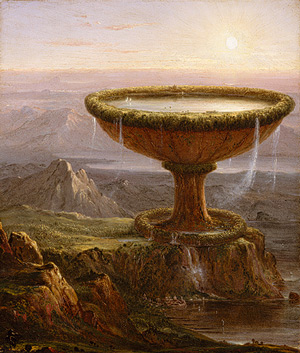
Even if everything were explained, the mystery would still remain.
Wittgenstein
Artworks are puzzles, who may or may not have solutions. But even those with solutions, remain puzzles.
I continue to return to questions surrounding genre. The fact is, everything is genre, now. The ascension of genre has corresponded to the erosion of narrative complexity, and the rise of a post modern sort of snark/irony. The cultural landscape, now so mediated by marketing, by the increasing acuteness of the contradictions of capital, has evened out an adumbrated menu of pre-digested psychic astronaut food. There is no reconciling the actual tensions, so a hyper accelerated forgetting is being pushed, consciously by the producers of cultural product — and its interestingly surfacing even in TV series plots. Amnesia is very popular just now.
Genre retains the genuine angers and resentments of its class. It is unapologetic — but when I say genre, I tend to mean the work of writers never to be awarded a Booker Prize. Perhaps this aspect is simply class. In any event, there is something to be said about form and structure in regard to genre. The formalism of Cain or today, a Matthew F. Stone or George Pellicanos, is akin, as I said last time, to Noh or Kabuki.

John Kani, Wilson Ntshona, in Sizwi Banzi is Dead, 1971
The deeper reading of genre…of those almost archetypal characters such as Frankenstein, or Dracula, the Vampire in general, or Zombie, or the private eye or gunslinger…all of them are born of specific social trauma. Moretti observed Dracula and Frankenstein are twin polar forms reflective of Capitalist fear born at the Industrial Revolution: the lowly disfigured wretch, slave, and the ruthless proprietor. The underclass slave has no name, the owner of the land, the employer is royalty. There is much more to say on the invention of horror, and of the grotesque — but for now, to recognize the hidden fears and desires, the irrational identifications with actual material conditions and history is worth noting.
For theatre is a medium of text. It is a form of thought happening on stage, via the strange ritual of performance. Theatre may not be born of religous ceremony, but I suspect acting was. Acting is purification, self lacerating and self punishing. It is, of course, also narcissistic acting out, if not downright schizophrenia. But the text is the initial de-stabalizing — yet it must engage with the material world, without doing so by way of the enclosures of social control. There is a distance established between the familiar, and the play — between the undeniable semblance of the artwork, and any conscious desire for meaning.
Perhaps it is the voice of the play that must know the uncanny. The play must know (again, not in its message, but in its form and presentation) the truth of the repressed material. The enemy is within. But it is within, because of what has been and continues to be without. As Moretti says, the figures of monsters or demons serve a double function: they both make physical the trauma, and hide it, or at least obscure it. In later 20th century genre, the protagonists embody this trauma in another way, because the interior life of the society is shrinking in some way, this almost becomes the fear. The knight errants of detective fiction, or the anti heroes and everymen of noir and black mask writers are caught in some battle they can never can gauge properly, but must fight against anyway. In that sense, they are far more existential than Harker or Van Heisling. The eradication of myth in corporate product, or in mainstream fiction or theatre is achieved by way of denying the trauma, and in turn denying ANY inner life to the characters. These plays then are exercises in branding, they are adverts for a bourgeois world view of re-unification and re-stabilizing. And now a landscape of hyper branding and simulacra, of extended reification, is even blowing out the walls of the dominated city.
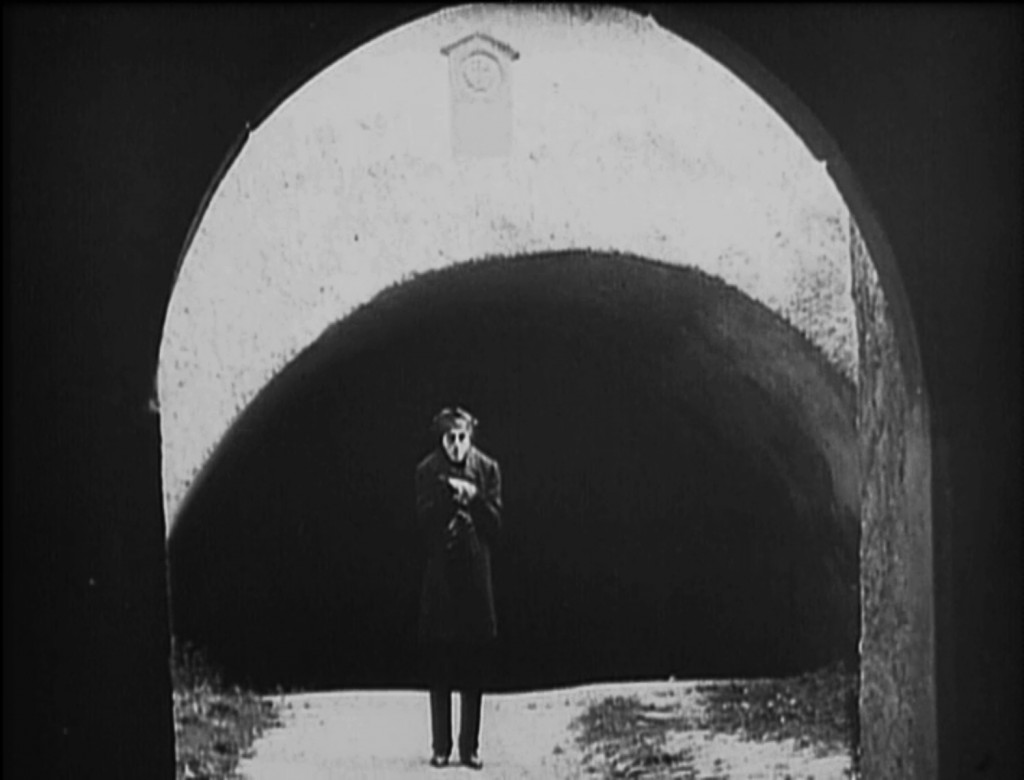
Nosferatu, dr. F.W. Murnau, 1922
“Although judgments may occur in it, the work itself does not make judgments, perhaps because ever since Attic tragedy the work has been a hearing.”
Adorno
If artworks are reduced to “message” they are simply validating the societal irrationality as rational. If a play follows the precepts of an enclosed discourse, using the language of endless adjustment to the status quo, then the authoritarian/totalitarian objectification is complete. One of Adorno’s observations of Beckett’s work was that as reality, as societal control approached a singularity, a unanimity, the plays reflect the abstract nature of human relations by their obliteration of the idea of the real.
I was recently killing some time in a teacher’s lounge at a school and noticed the framed prints of various artists. I was struck looking at a minor local artists still life, hung next to a print of Bonnard. The still life was skillful and quite beautifully realized…but despite its attractiveness it remained illustration. The Bonnard, far less attractive finally, still existed as art. Close by was a print by another local abstract painter, and again while skillful, it was simply design. What made the Bonnard art? The answer dwells in its idea. The idea existed before the image. In the still life, the illustration was serving nothing more than what it showed. It justified the administered world for it asked nothing of it. It wasn’t realistic, but it commented on the realistic through an educated technique. Bonnard’s painting echoed earlier forms, and asked something unanswerable — and thereby registered a quality of duration. The migration of this quality of duration to theatre, and then to film, is a topic to be looked into. Directors such as Dryer or Tarkovsky, predicated their narratives on this knowledge of the artworks challenge to mortality.

In an era in which societal mediation is nearly total, the narrative in artworks, in theatre specifically, must address the enclosure of text by instrumental logic, and with this challenge comes the need for a heightened awareness of a depleted relationship with history, and with the colonized subject and that ideas of tragedy are therefore parodic. To write meaningfully means firstly to interrogate constructs such as realism, message, and then with a vigilent attention, moment by moment, to the expelling of those ever more insistent markers of domination (irony, snark, innovative, etc etc) as they appear. Writing is close enough to silence already, for autism is the currency of the Spectacle. One must speak, there must be a text, but it must be undomesticated.

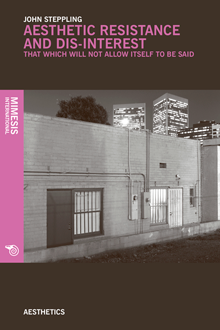
Speak Your Mind